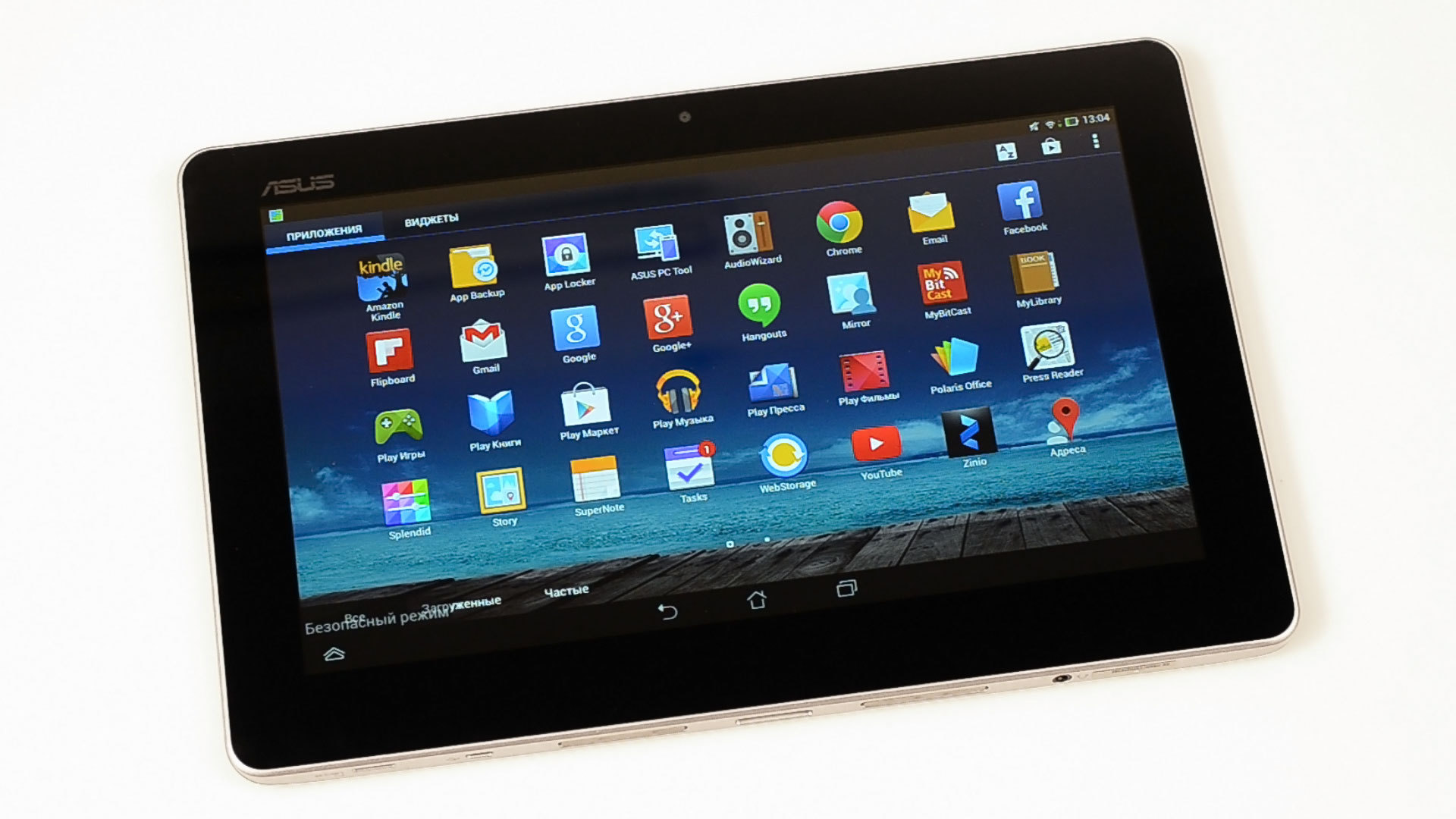ASUS Transformer Book Trio: tested in humans

You probably know that ASUS, in addition to its other achievements, is famous for its line of hybrid devices. Recall them by name?
- Eee Pad Transformer tablet with a keyboard docking station
- PadFone - the first gadget that combines a tablet and a smartphone
- Taichi ultrabook with two displays
- Transformer Book with a removable tablet-screen
- Monoblock Transformer All-in-one (AIO), whose screen can be use as tablet
Sometimes it may seem that the company's engineers are creating more and more “transformers” haphazardly. But in fact, ASUS was never afraid to experiment - remember, for example, the legendary Eee PC line. Well, given the global economic crisis and the decline in sales of personal computers in particular, such experiments look logical and timely.
The company does not stop there - in June last year, at the Computex exhibition, a new device with a long name was introduced - ASUS Transformer Book Trio. The device, which the head of the company Johnny Shea presented in the Steve Jobs style “And something else ...”, really turned out to be quite unexpected, although logical development of the line of hybrid devices.
What is a Trio? In fact, these are two devices in one that can perform - attention! - three functions. Firstly, it is a full-fledged Android tablet with an 11.6-inch diagonal HD screen. Inside is a dual-core Atom Z2560 1.6 GHz, 2 GB of RAM and 16 gigabytes of user memory.

Secondly, it is a rather powerful laptop running under Windows 8.1, with a fourth-generation Intel Core i5 processor (1.6 GHz). Plus - 4 GB of RAM and a 500 GB hard drive.

And finally, the most unexpected move: the “Trio” can work as a kind of nettop with a built-in keyboard - the user only needs to connect an external display device.

We add that in notebook mode the “Trio” can switch between Android and Windows on the fly - just press the special button (the top row of function keys).

And now all the performance characteristics, for those who love the heat of cold numbers:
Tablet
screen:
11.6`` , 1920 × 1080 Atom Z2560 processor 1.6 GHz
RAM: 2 GB
memory: 16 GB + microSD
cameras: 5 MP / 1 MP
battery: 5070 mAh
weight: 700 g
Nettop
processor: Core i5 1.6 GHz
video processor: Intel HD Graphics 4400
RAM: 4 GB
HDD: 500 GB
battery: 4430 mAh
weight: 1 kg
So, before us, a kind of “combine”, which can quite successfully replace as many as three devices and at the same time remains ergonomic and relatively compact.
The tablet itself, it’s the screen, is rather bulky, but in principle it’s convenient, and the size allows more than small tablets. The display is excellent in all respects - ASUS usually has no problems with this. Yes, the frame is too wide, but it, on the other hand, allows you to comfortably hold the tablet. Our copy did not have the largest amount of user memory, but it is fixable - just use microSD.

If we talk about the laptop, then in the assembly it is heavy, although it is quite elegant and made in a style familiar to us from other ASUS models. When joining two parts, despite the magnetized guides, you still need some skill - in weight, for example, this is not so simple. The fastening of the two parts is reliable and there are no questions to it.
We have already talked about the ease of switching between operating systems, and this is really a big plus. Another thing is that periodically, after exiting sleep mode, the keyboard turned off under Windows for us and the system reacted only to touch input. A similar problem was treated only by restarting the entire system - there is a suspicion that these are features of the test instance.

The speed of the transformer is at its best, its filling is the most modern and quite suitable for a variety of tasks. But with the measurement of battery life, an incident happened: according to ASUS, then in the tablet or Windows-notebook mode the gadget should work for at least 5 hours, and up to 13 - when used in the Android-laptop mode. We, in mixed mode (tablet, laptop, nettop) Trio barely stretched 6 hours. And one more important point: the tablet can be recharged from the battery built into the keyboard, but not vice versa.
We add that the keyboard and touchpad are convenient to use - no complaints. The set of ports includes 2 USB (one of them is version 3.0), microHDMI and mini DisplayPort. We'll have to turn around, but for laptops this can be said a good set (by the way, a couple of adapters are included). And do not look for a card reader for regular SD cards - it is not here.


Well, the price. The spread for various modifications of Trio is from 36 to 40 thousand rubles. In our opinion, it is quite adequate. The device is unusual, but this eccentricity is quite functional. There are some problems, but they are completely solvable at the level of drivers and firmware. Naturally, if you take a tablet, laptop and nettop separately, you will probably win for the money, but it is unlikely that such a solution can be called elegant and modern.
Note in small print: if you want to see how the ASUS Transformer Book Trio looks “in motion” - watch our video .
